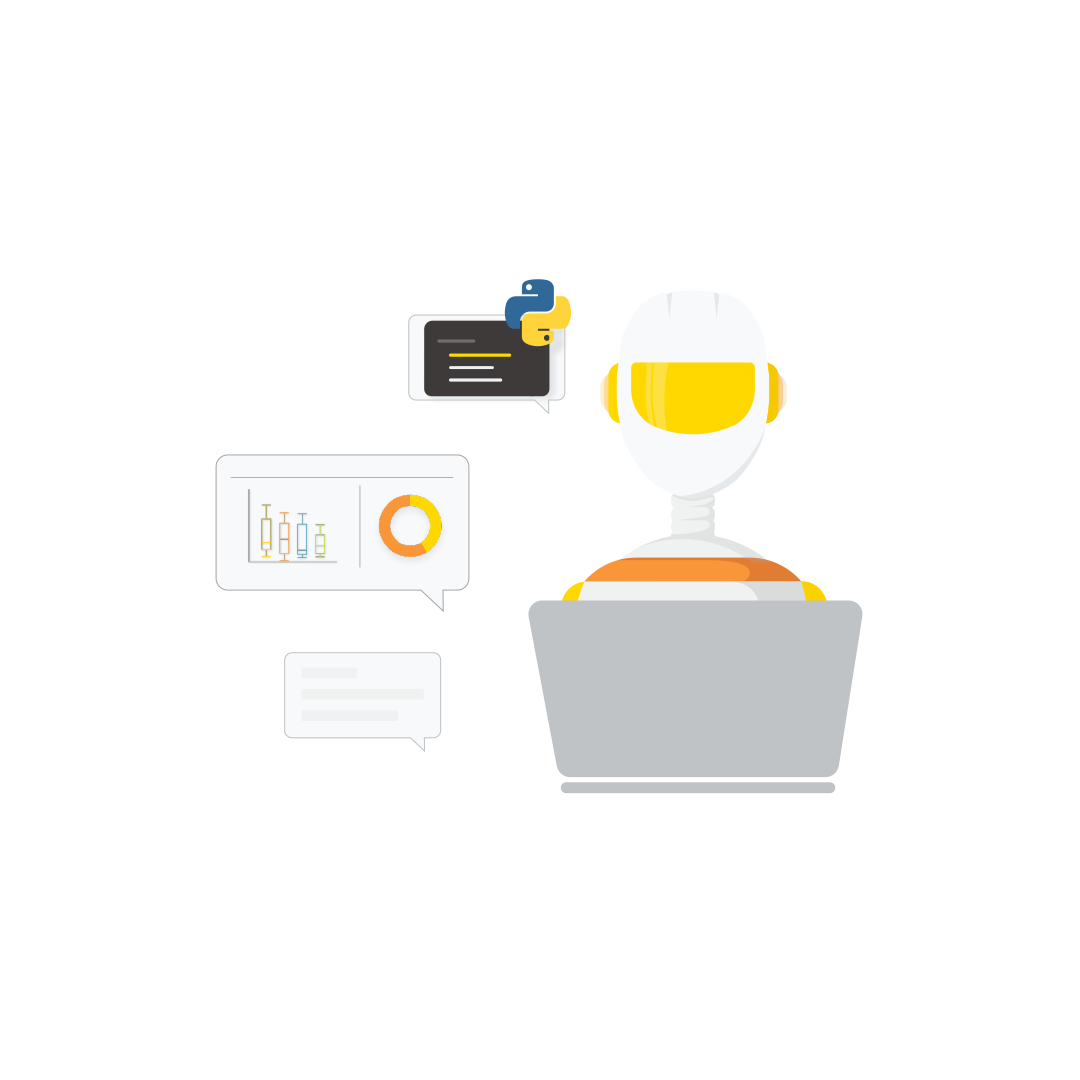Note: There is a newer release available. Read about the KNIME Analytics Platform 5.4 release.
The highlight of the December 2023 release, KNIME Analytics Platform 5.2, was substantial improvement to the new user interface, based on continuous, crucial feedback from our user community. It's easier for both, new and experienced users to find the nodes they’re looking for, navigate and pan across them, annotate them, surface relevant documentation, ask for help, and more. We look forward to your continued feedback to help us build the most intuitive visual programming experience for beginner and advanced users alike.
KNIME has continued its commitment to make analytics accessible to everyone regardless of their background. With the improvements made to the KNIME AI Assistant, K-AI, and the capabilities to create scripts for Python and visualizations automatically with AI, we are taking a step further towards ensuring that anyone can start using and upskill in analytics and do more with their data. These capabilities also allow advanced users to expand into new disciplines much faster with AI to guide them.
Find a more detailed walkthrough of each of the major updates below:
Improved UX based on community feedback
Get around easier & create neater workflows
KNIME Analytics Platform 5.2 comes with a revised application header that lets you find helpful documentation, set preferences, check for updates, install extensions, switch workspaces, and more much faster. You can also easily access your KNIME logs through the new header.
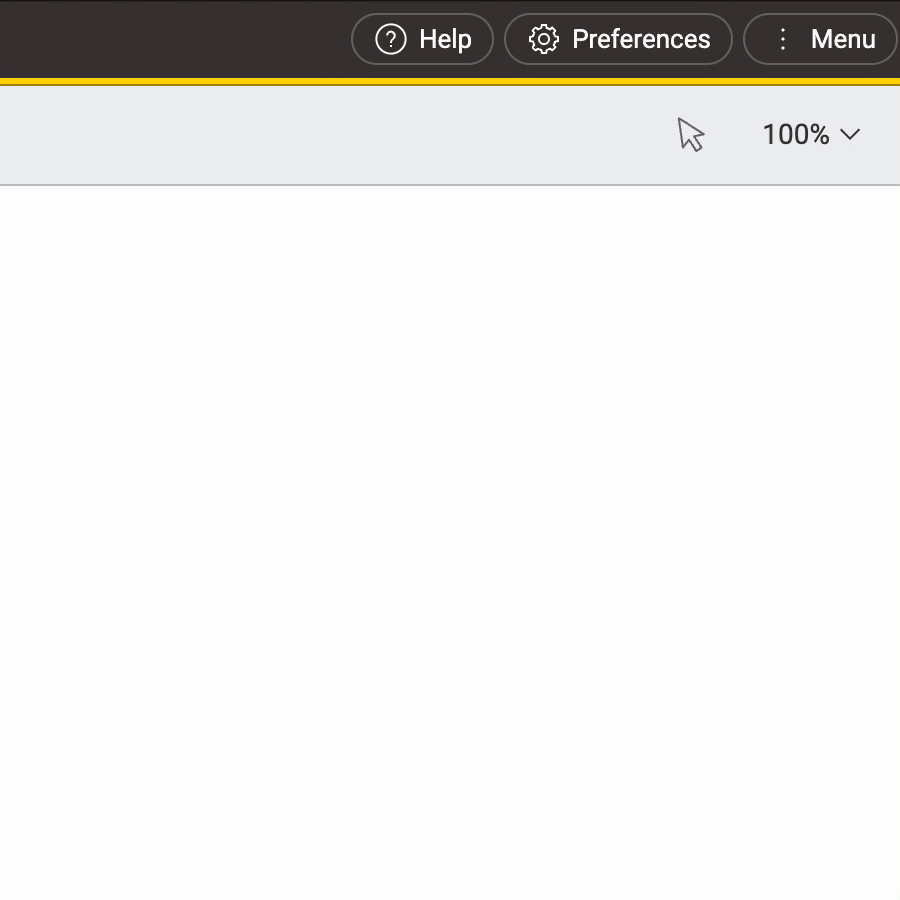
The version also provides various editor interaction modes to let you select nodes, add annotations to workflows, and pan and navigate around workflows, allowing you to interact with the workflow editor in a way that suits your needs.
With 5.2, you can add “bend points” to node connections and move them around with nodes to create neater workflows.
Browse and explore spaces more intuitively
Several enhancements have been made to the space explorer, the panel on the left of the editor that lets you access and navigate your projects and the artifacts within it, to improve workflow management and collaboration.
You can duplicate workflows and folders locally, on the KNIME Hub (the platform to collaborate and productionize workflows), or on the KNIME Server to create copies for various purposes. This is useful for creating backups, versioning, or starting a new project based on an existing structure.
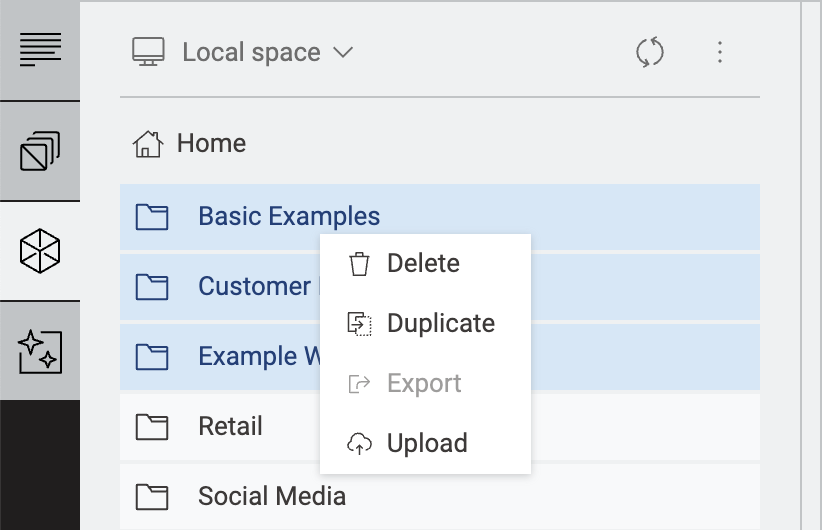
You have the option to refresh items to reflect the latest changes. This is particularly beneficial when working collaboratively and when updates have been made to workflows or folders by other team members.
You can move items between your KNIME Business Hub spaces for better management of workflows and folders.
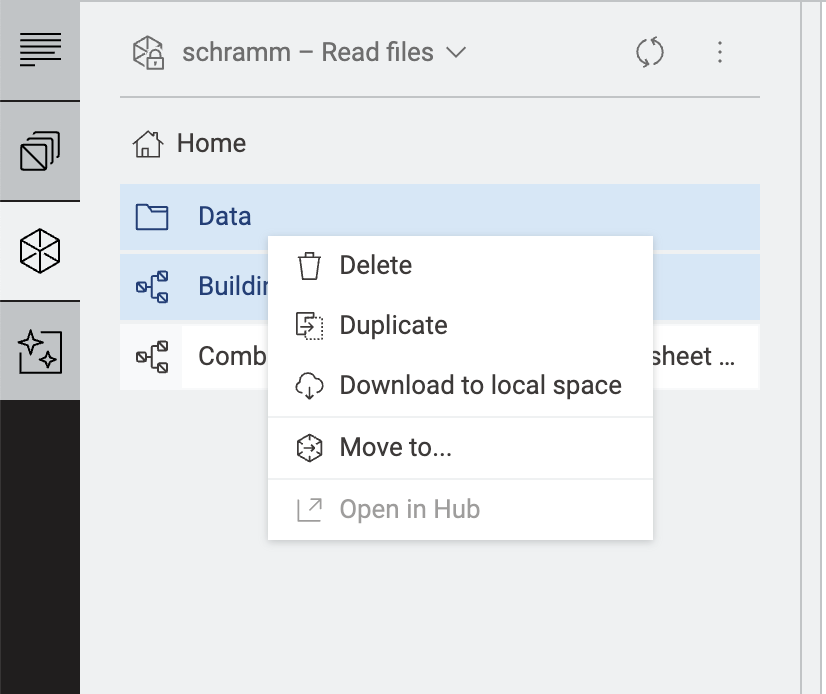
The dropdown in the space explorer is now grouped by owner for better organization.
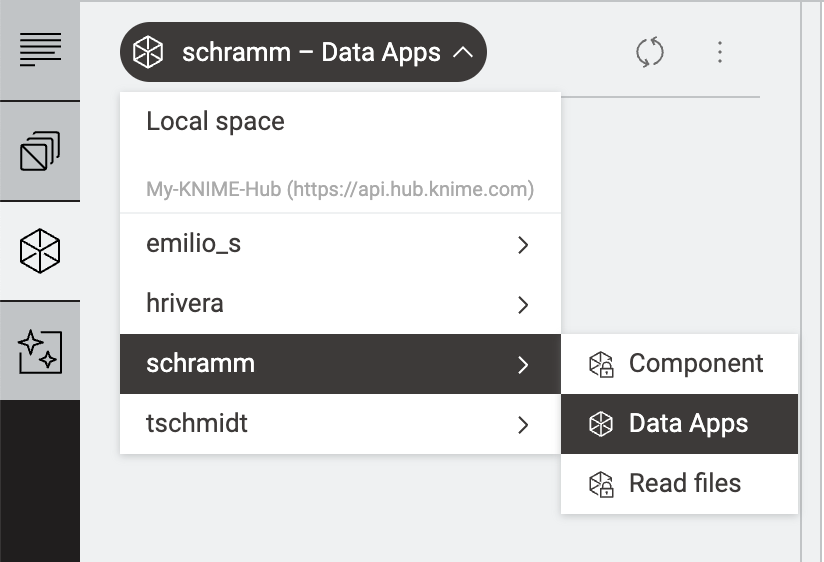
The ability to “save as” allows users to save workflows into a different destination, letting them create variations of existing workflows without modifying the original.
Connectivity to KNIME Server
For our KNIME Server users, we’ve added KNIME Server connectivity to the modern UI. You can now connect to, access and browse your folders, workflows and other items on the KNIME Server from the Space Explorer and from the home screen. You can open workflows, re-save them on the Server, execute them or create a schedule for execution, and view jobs, all from within KNIME Analytics Platform.
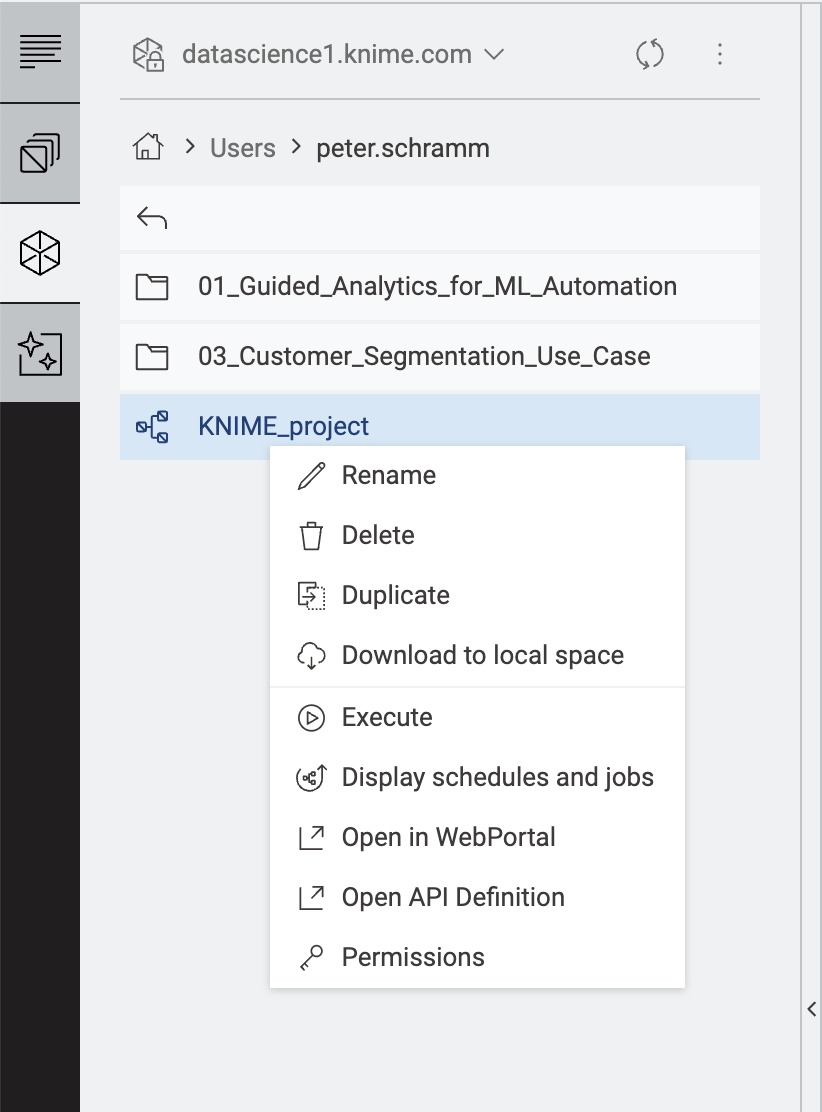
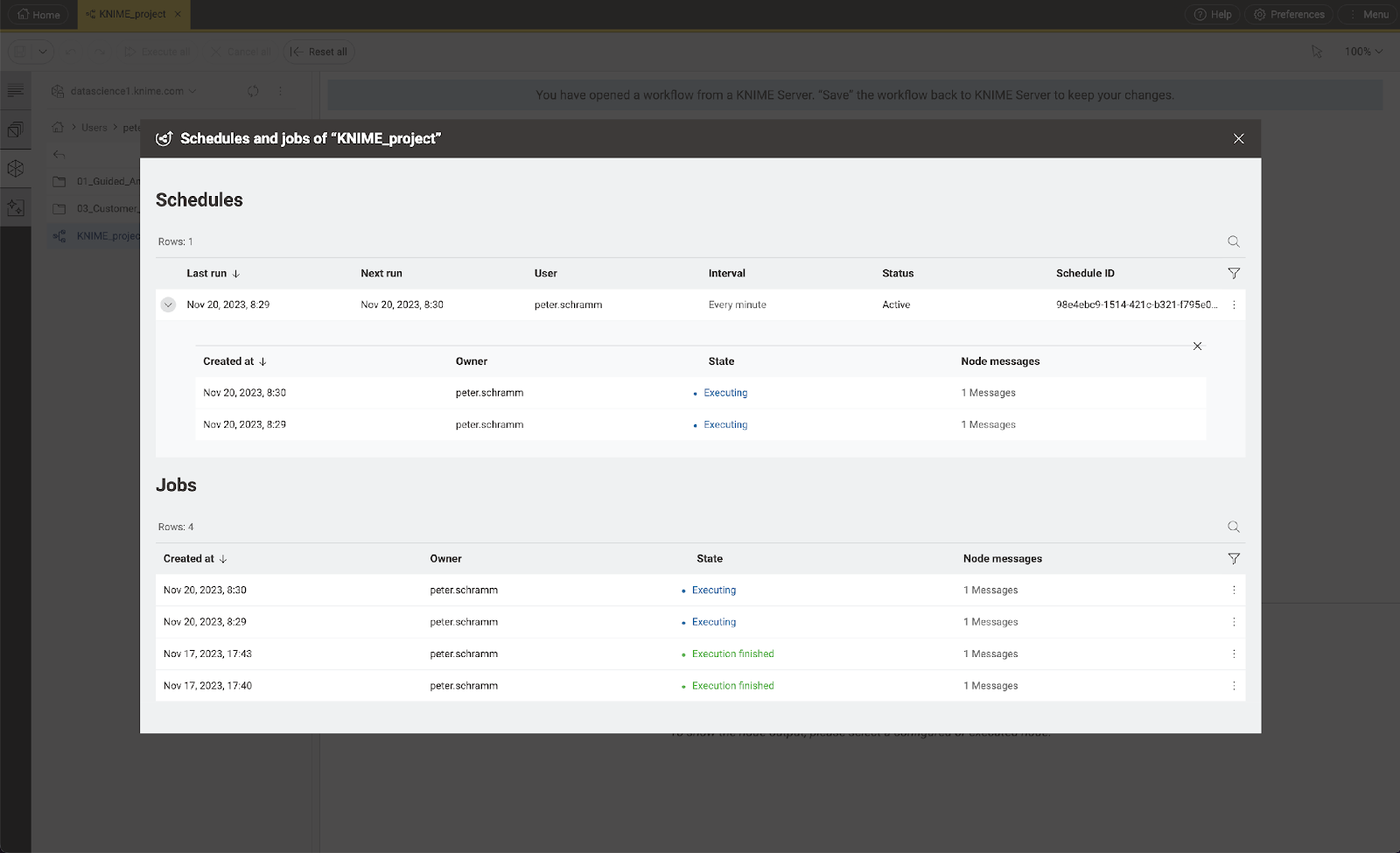
Improvements to the node repository for faster search and navigation
Node search and quick node adding are much faster. Hovering on a node now gives you an instant glance at which extension the node came from and who developed it. Nodes that are provided by partners or by developers from the KNIME community are distinguishable with an indicator. You can choose to view nodes either as a list or as icons based on your preference.
Modify components more easily
You can now quickly edit metadata within the component such as change the description, add an icon, change the type, add external resources, add tags, and more, enabling more efficient workflow design and maintenance.
The layout editor of the component can be accessed from the outside through a right click without having to expand and go inside the component, making it much easier to modify the layout of components.
You can also share the component locally or on the Hub to collaborate with team members. You can open shared components in your local or Hub space as a new tab for a clearer view.
Interact more clearly with data output by a node
The node monitor, the feature that shows you the output table for each node, is now not only accessible in the bottom panel of the editor, it can also be popped out into a new, separate application window. This provides more flexibility in monitoring and managing nodes.
Additionally, "visual brushing" is now available in the modern UI allowing you to easily spot the relationship between rows in tables and data points in charts and views as selecting data points now highlights the corresponding rows in the table.
Also, you can now select not only individual cells but also entire ranges of cells within the table in the node monitor and paste them into other tools, such as spreadsheets.
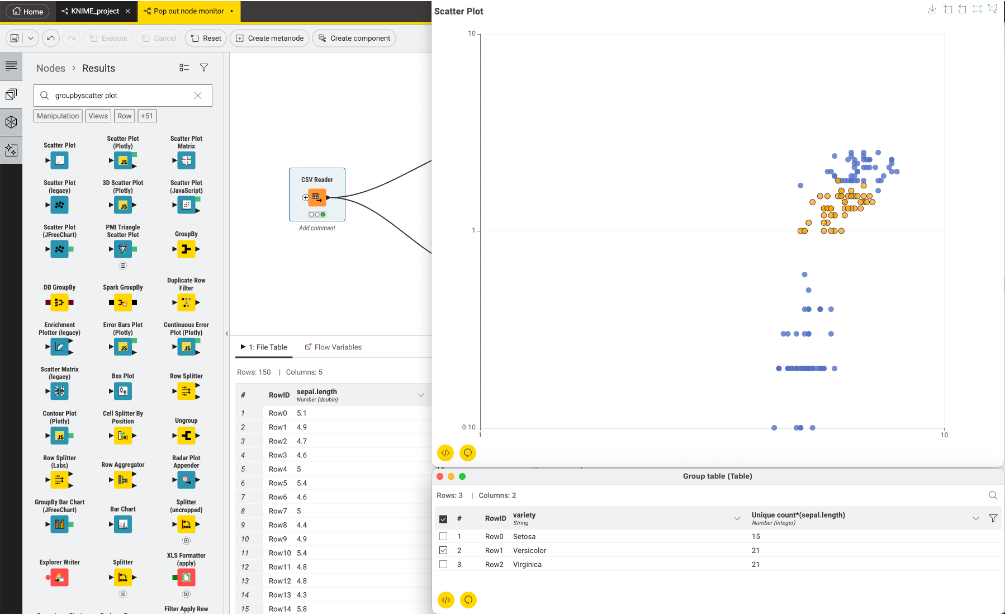
Flow variable support in node dialogs
The configuration dialogs for nodes now come with support for flow variables that let you decide if you want to share the output of the node with other nodes in the workflow, enabling an exchange of information between different parts of the workflow.
K-AI responds more quickly, accurately & shows its sources
The KNIME AI Assistant, K-AI, an experimental service in active development, has several significant improvements. It was trained on more KNIME-related data, it shows its sources, and you can get more meaningful and faster responses.
K-AI is now able to give you more accurate responses, recommending not just the nodes that you need to use to perform data operations, but also providing guidance on how to configure them to do what you need, and suggesting any additional functionality you might require in the form of extensions.
K-AI backs up its responses by citing the sources it used to provide the response, such as providing a link to a KNIME Forum post that served as a reference. This enhances the transparency of the generative AI capabilities, enabling users to trace information back to its origin and assess content reliability.
Its memory now enables meaningful conversations rather than just responding to single prompts.
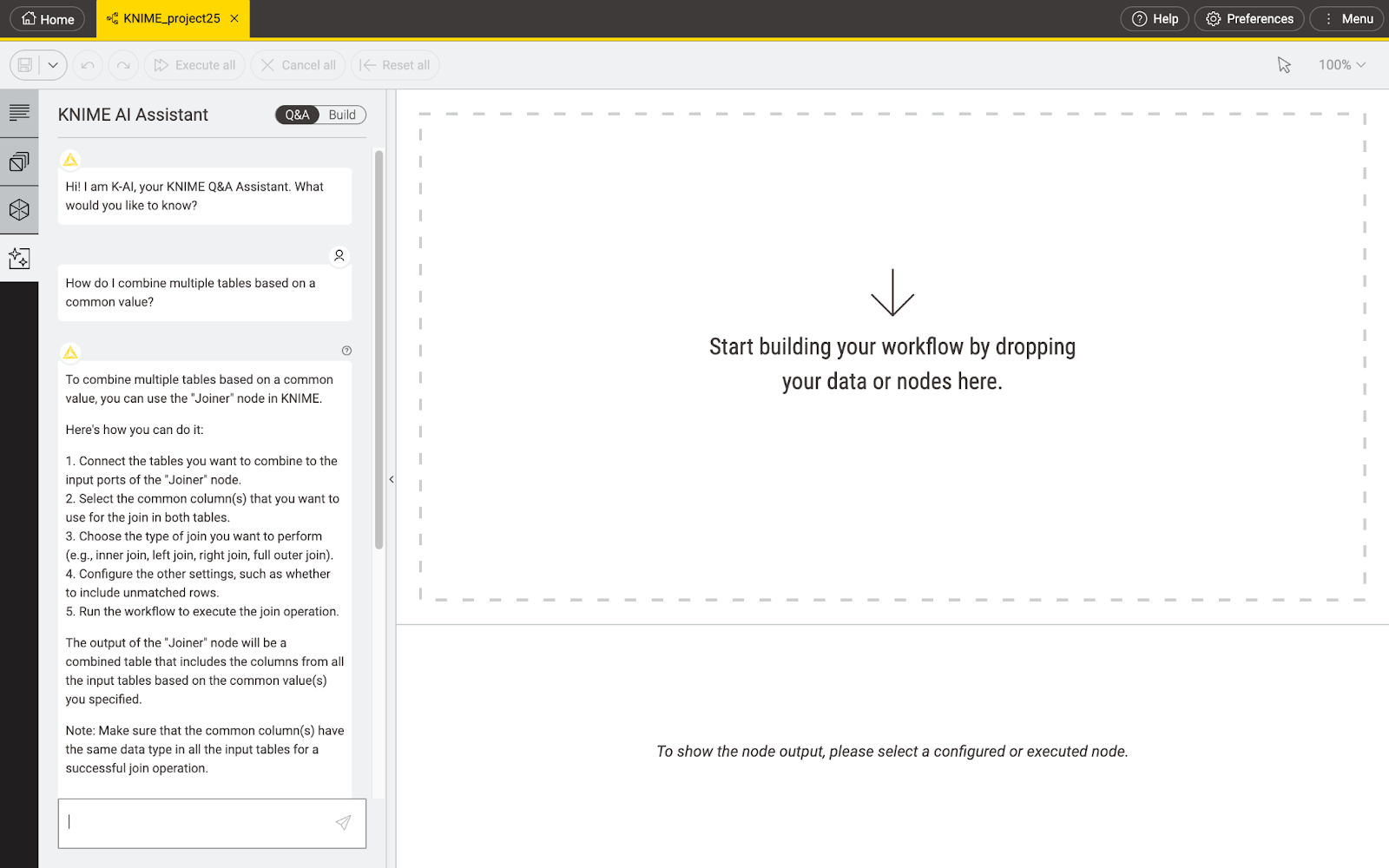
In the "Build" mode that automatically creates workflows, K-AI can configure the node for you based on your prompt. For instance, you can describe how you would like to summarize or organize your data for a pivot and it automatically configures the Pivot node for you.
Instead of creating new workflows for each request, K-AI can now be used to extend existing workflows.
With this release, its UI has been enhanced to be more intuitive and coherent with the rest of the platform. K-AI’s responses are streamed into the chat, so you can see its response faster.
Modernized scripting experience with AI
This release introduces a new editor for the Python scripting node with a totally modernized UI, giving you an enhanced scripting experience.
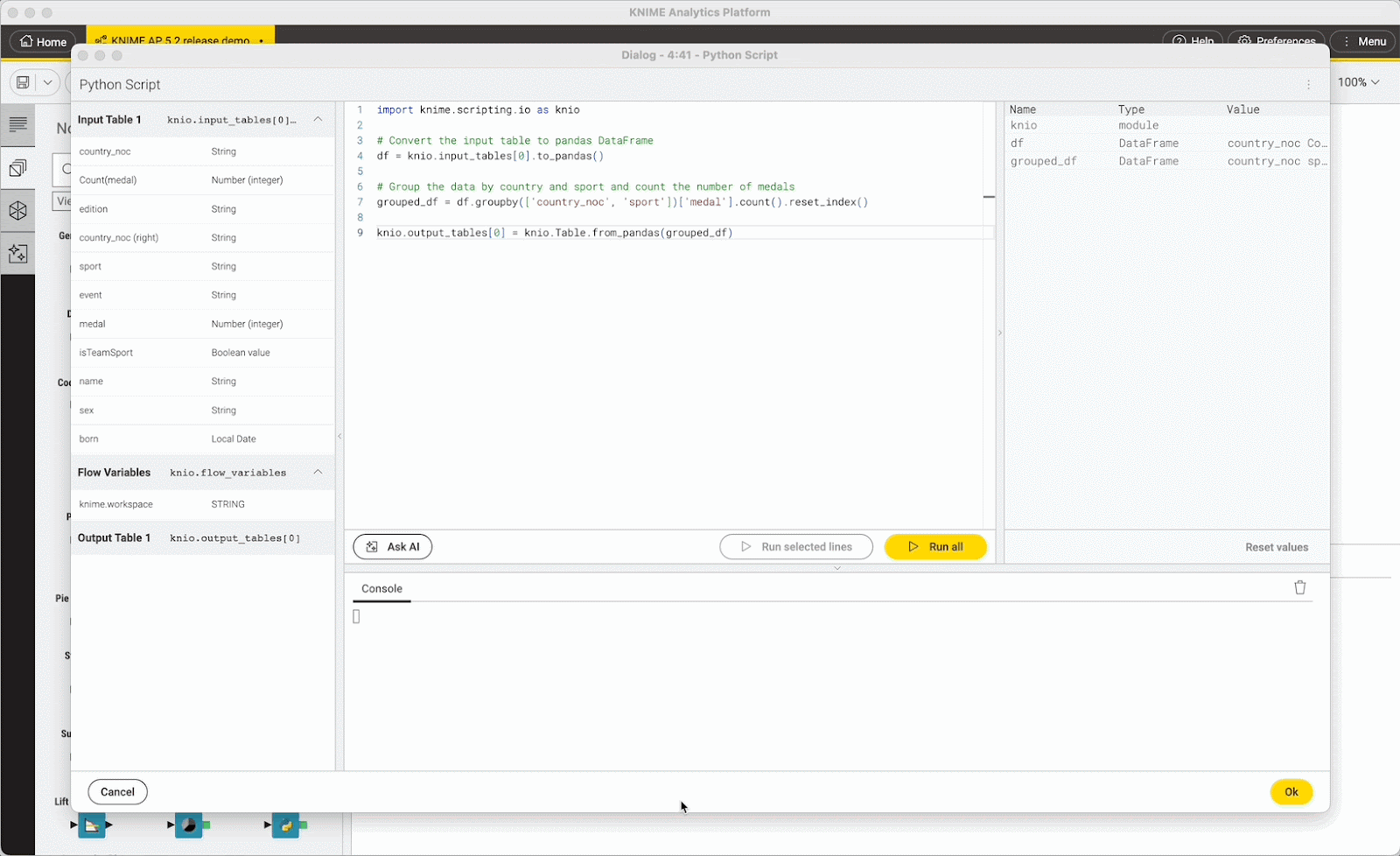
Additionally, the Python scripting node comes with an AI coding assistant that generates Python scripts automatically based on your prompts and does the heavy lifting for you, speeding up data solution building.
Access LLMs in the Azure environment
The KNIME AI Extension now provides support for Azure OpenAI Service. The support for Azure OpenAI Service allows enterprises that have chosen Azure as their cloud infrastructure to make use of advanced language models within the familiar Azure environment.
Explore sample workflows for Azure OpenAI Service here.
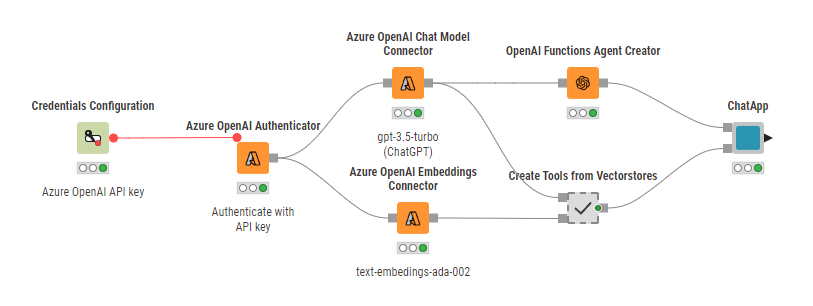
Support for local LLM installations for data privacy
In addition to cloud-based services, the KNIME AI Extension also supports local installations of LLMs. This flexibility is important for organizations that may have specific requirements or constraints regarding where their models and data are hosted. It provides the option to use LLMs in a local environment, offering more control over infrastructure and potentially addressing concerns related to data privacy and security.
You can build a fully open-source AI-powered application while keeping your data private by connecting to and using open-source chat and embeddings models from GPT4All and HuggingFace Hub without relying on proprietary or closed-source solutions. These open models benefit from contributions and feedback from a diverse community, fostering innovation and continuous development.
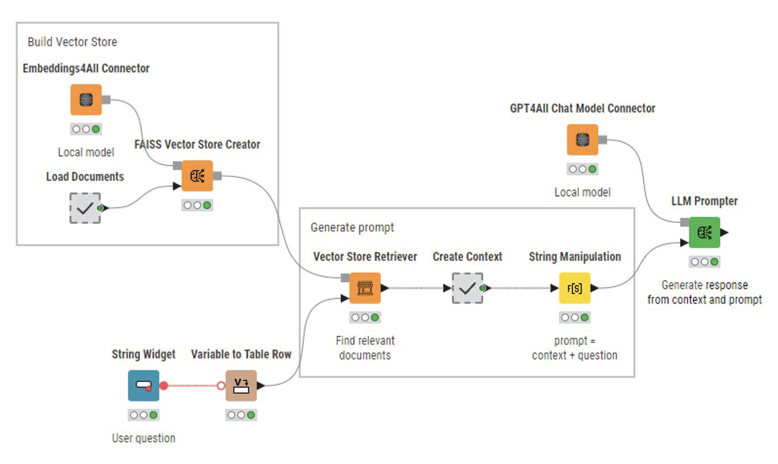
Vector stores in the KNIME AI Extension now have the capability to store metadata. So, when you get a response from the model, you can also find out more about the source of the information, like where it came from or the URL of the document it used. This makes it more convenient for users to retrieve and understand the context or origin of the data used in LLM responses within KNIME.
The KNIME AI Extension also lets you connect to DALL-E and generate images based on your prompts and descriptions.
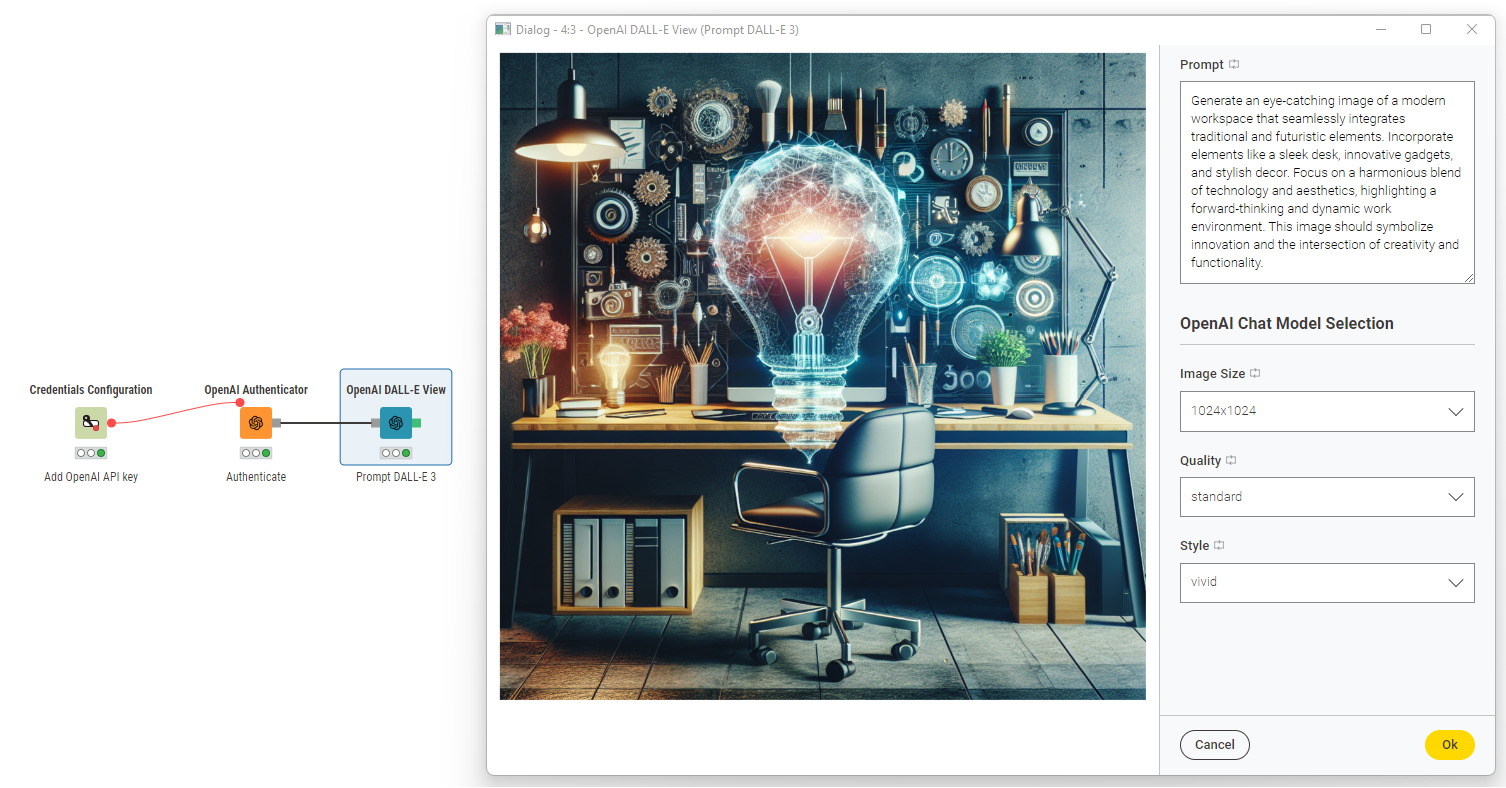
Reporting capabilities to generate reports faster
First introduced in 5.1, the KNIME Reporting extension is now available for everyone to use and has been moved out of KNIME Labs . The extension makes it easier and faster to generate and distribute static reports for both one-off and recurring needs. You can customize content within the report to tailor it to your specific needs such as customizing row height in tables, auto sizing table columns, adding page breaks in the report, formatting numbers and strings. Other changes include a new Report Template Creator node to define report properties such as page size and orientation, and in a future version, further customization of the report. Also, a new Report Loop End node allows the collection of report pages in KNIME loops, for instance, to create and collect report pages for different data categories.
For KNIME users, the experience of building a report is as intuitive as building data apps.
Take a look at this collection of workflows that use the Reporting extension.
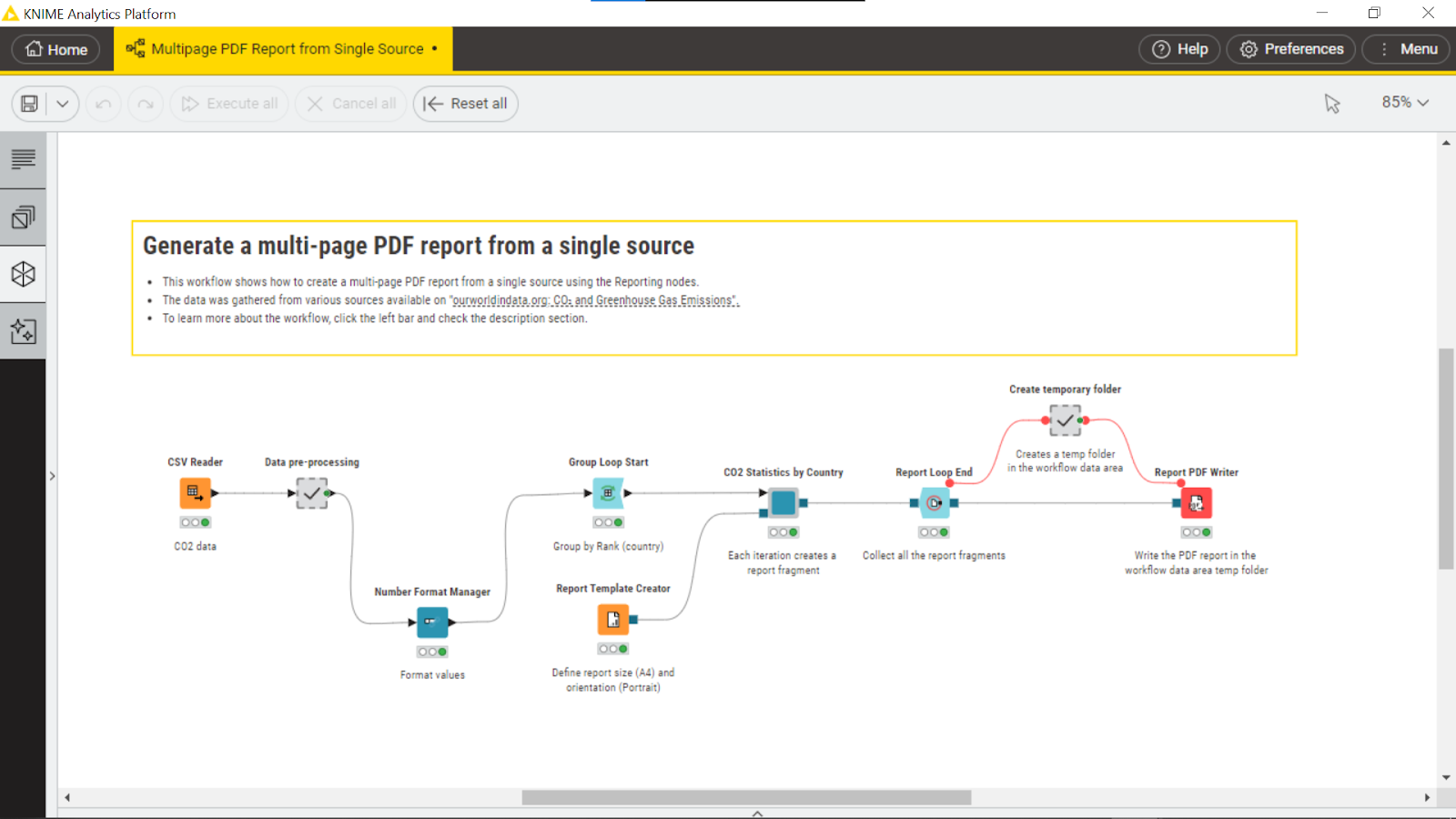
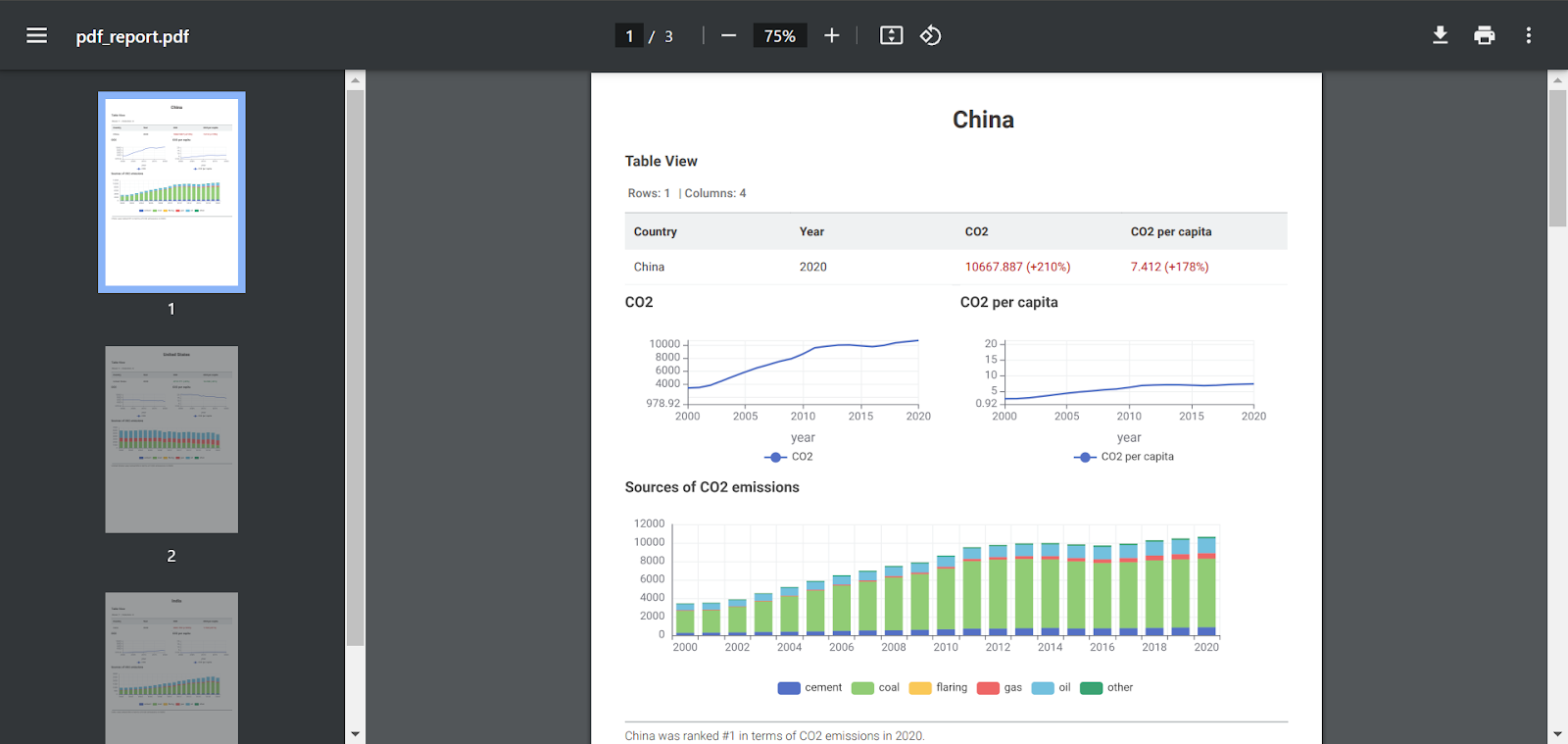
Create views with Apache ECharts and other enhancements to interpret data easily
Create custom ECharts views with an AI coding assistant
The new Generic ECharts View allows you to freely create custom views for your data based on Apache ECharts, a widely-used open-source JavaScript visualization library that lets you add charts to your applications. It provides the same familiar visual framework as the other KNIME views and lets you see instant updates within the chart preview as you edit. It comes with a gallery of templates to get you started quickly. The template previews are already using the data connected to your node so you instantly know which plot type works well with your data.
Browse example workflows to create custom Apache Echarts views here.
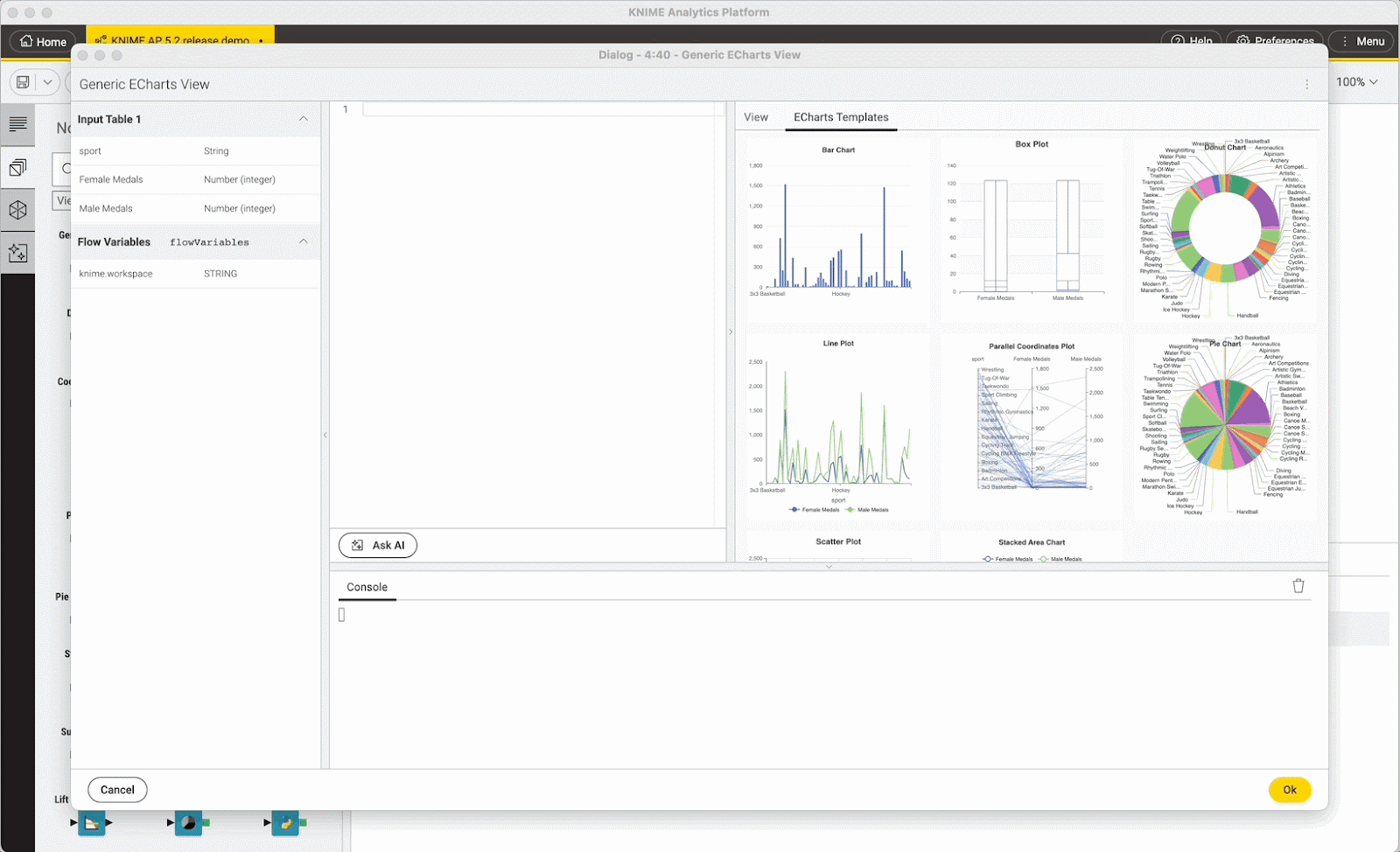
The Generic ECharts View comes with an AI coding assistant that lets you build custom visualizations for your analysis with a simple chat. This can be particularly beneficial for users who may not have extensive coding experience as well as for experienced users who want to speed up the process of creating visualizations. It can be used to create reports via the Reporting extension as well as while creating data apps, making it easier to present findings and derive insights. You can now create a wide range of visualizations easily with AI and add them into your reports and data apps as required.
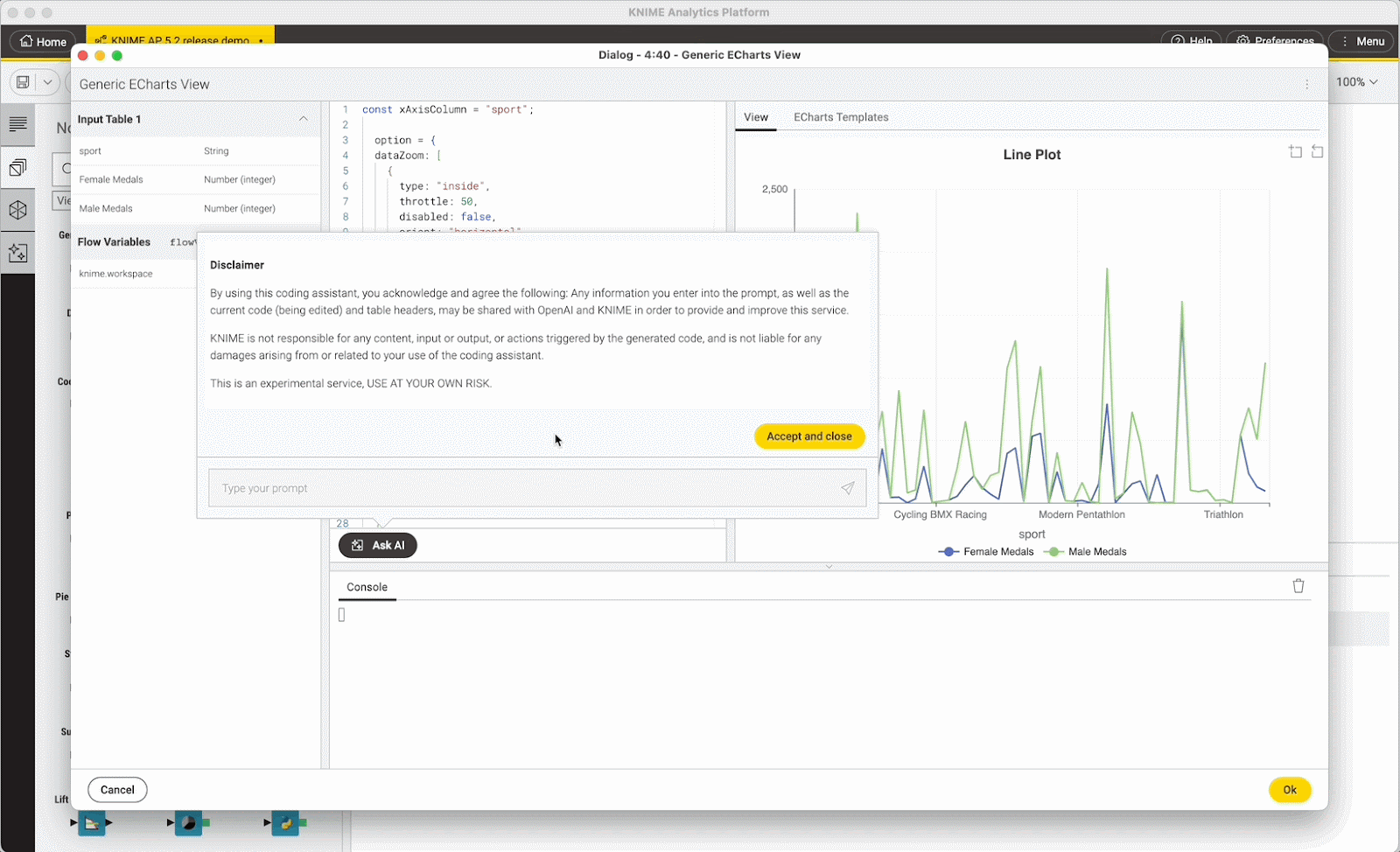
Better formatting and pasting of data into other apps with Table View enhancements
Enhancements to the table view let you quickly resize row height and resize multiple columns according to your preferences.
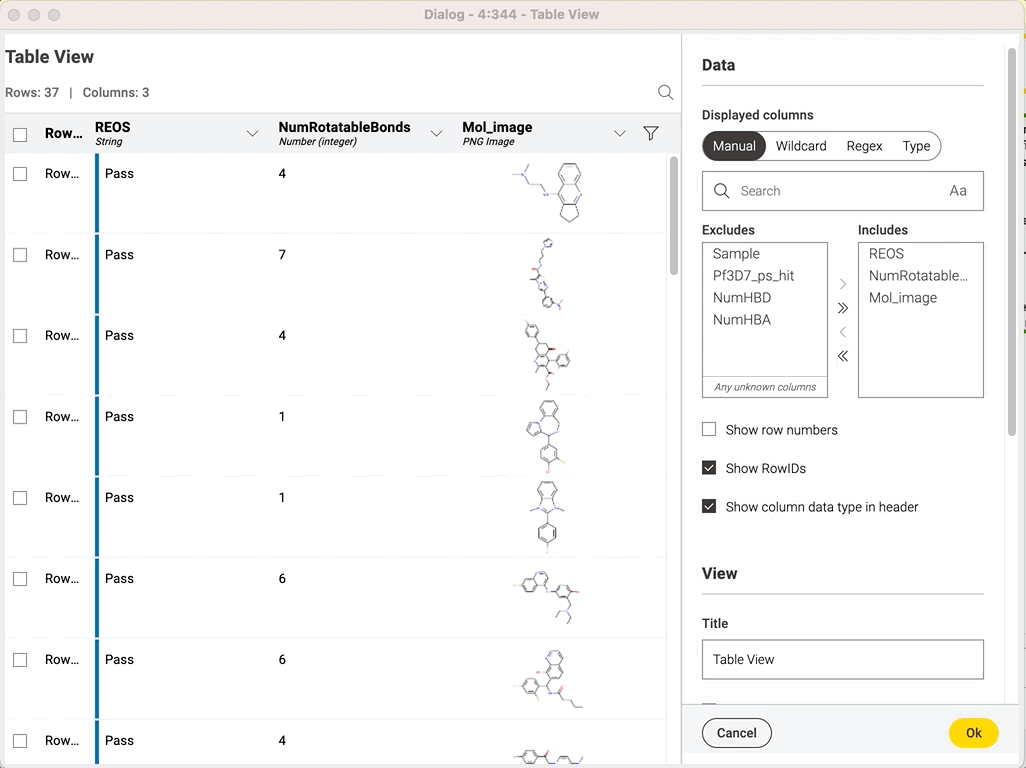
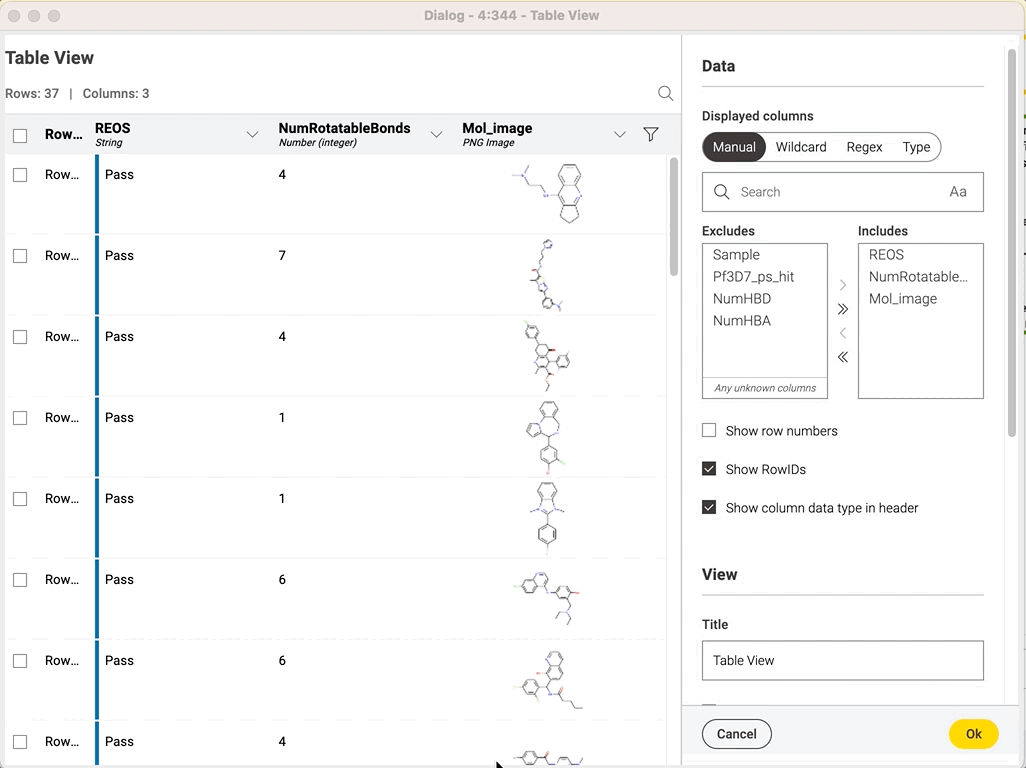
Visually distinguish columns in your charts with the Color Manager
For column-based charts such as the line chart, you now have the capability to assign colors to entire columns, and these designated colors are then applied to both the table view and the corresponding plot. This means that when you create line charts or bar charts, you have the ability to specify colors for entire columns of data rather than applying colors at a more granular level, like individual data points or cells within a column. This can be useful for visually distinguishing different columns or categories in your charts, guaranteeing consistent coloring across different charts, and making it easier to interpret and analyze data.
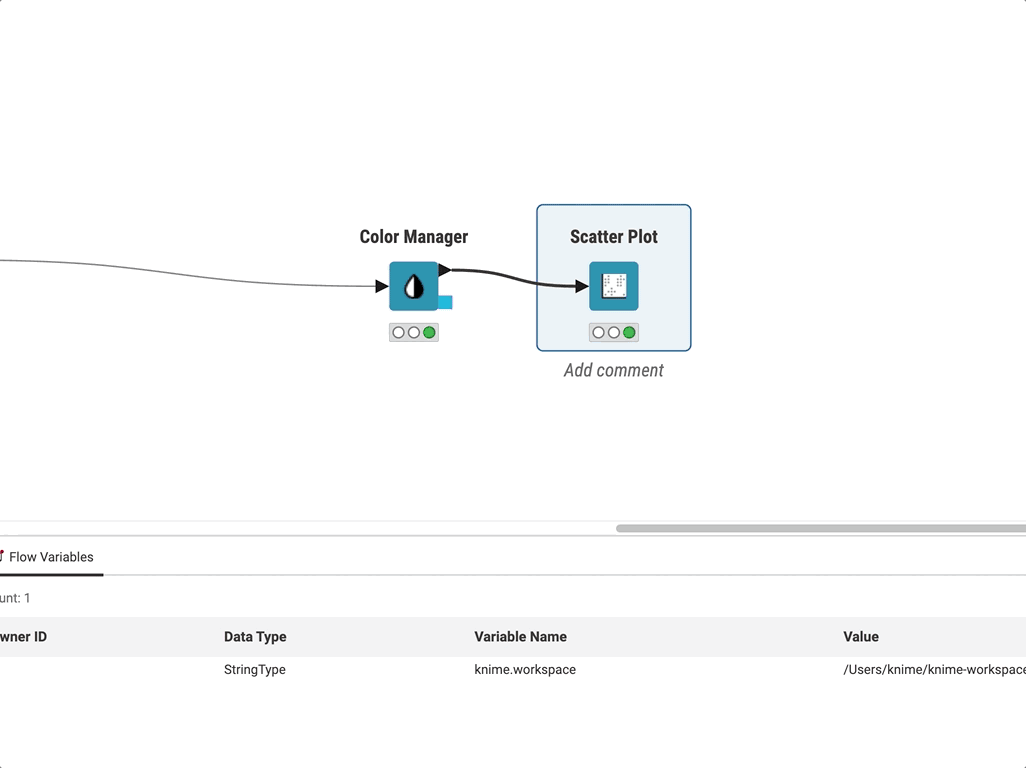
Text View node to provide explanations for your data app
The text view node lets you incorporate headings and blocks of text into your report or data app. With this node, you can easily provide context and explanations for the data, summarize key points, and offer interpretations of data visualizations.
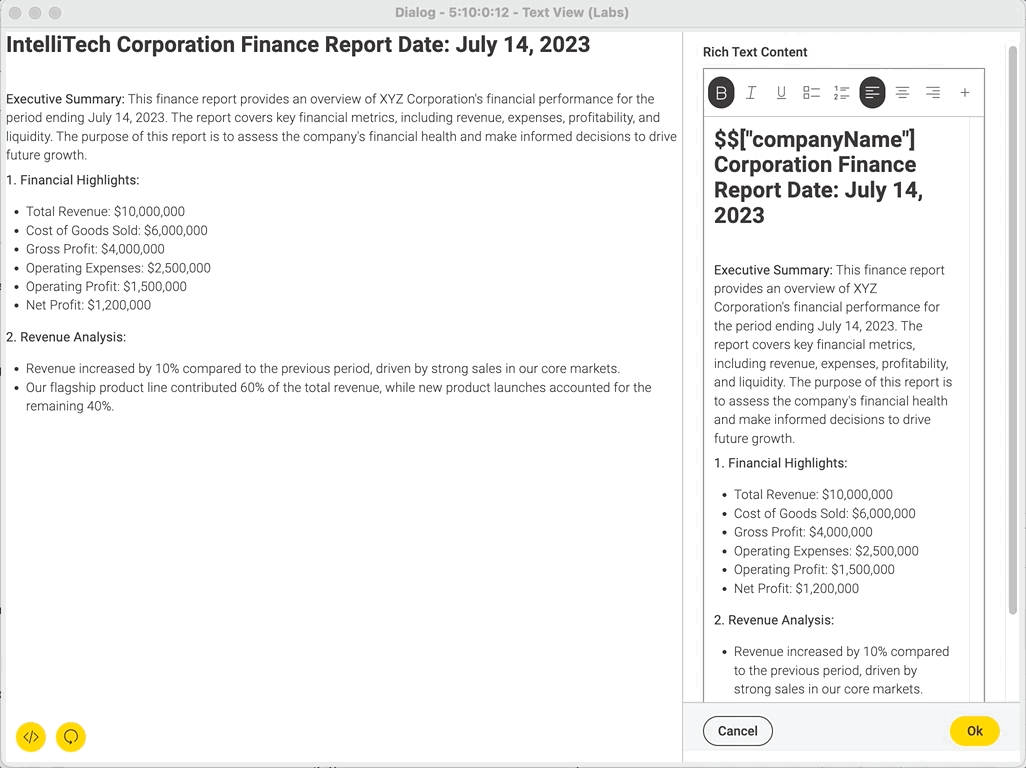
Other noteworthy enhancements
With KNIME Analytics Platform 5.2, we’ve made several enhancements to improve quality of life including the ability to analyze email data, improved support for more database and data types, easier formatting and cleaning, better proxy support, and more. Here’s a look at some of the improvements.
- The new KNIME Email extension, now part of KNIME Labs, lets you read emails from any IMAP compatible email services such as Google, Outlook, etc, simplifying extraction and analysis of email data. Once processed emails can be moved into another folder for further categorization or storage, or can be moved to trash. Browse sample workflows using the Email extension here.
- The KNIME Database Extension comes with improved support for Teradata and SAP HANA. It includes a built-in Databricks JDBC driver for the Databricks extension, eliminating additional setup steps. The extension also provides support for reading and writing of (text-based) chemical and biological data types directly from and into databases.
- The new String Cleaner node makes it easier for you to meet specific formatting and cleaning needs. It lets you perform operations on multiple columns, remove special characters, symbols, numbers, whitespaces, and line breaks, alter capitalization, and add padding to attain minimum string length. Take a look at readymade workflows that use the String Cleaner node here.
- The updated Google and Microsoft Authenticator nodes deliver a consistent user experience across authenticator nodes. They come with a new credentials widget with support for flow variables enabling users to pass information between various steps. A new credentials port enhances interoperability with REST and Python, while maintaining backward compatibility.
- You can now connect via an authenticated proxy to remote locations securely for tasks such as carrying out component updates and other related actions. The proxy configuration can be used application-wide whether interacting with spaces on KNIME Hub and navigating through the KNIME Explorer, using REST client nodes within your workflows, or when you have Python nodes in your workflows that require external connections.
- Aggregation nodes such as GroupBy, Row Aggregator, and Pivot nodes now perform much faster, especially when dealing with large data sets. The Excel Reader node also lets you read extremely large file sizes that run into gigabytes.
- The Call Workflow nodes now let you select the version of the workflow on KNIME Hub that you want to call.
Take a look at the full changelog for this release.
Download the latest version of KNIME Analytics Platform and try out these features.
